Well, here we are. When I was going through my first two playthroughs, I kept telling Bill that I would not do an evil playthrough because I don’t like them. But there is the option for “Dark Urge” as an origin character (still a Tav, but with a different storyline than the ones we’ve seen before) and I didn’t know much about it, so I started it. Essentially, you play a character who has amnesia as well as fantasies of blood and murder. I went with the name Oleandra, the closest I could come to the oleander flower, one of the most beautiful but poisonous plants in nature.
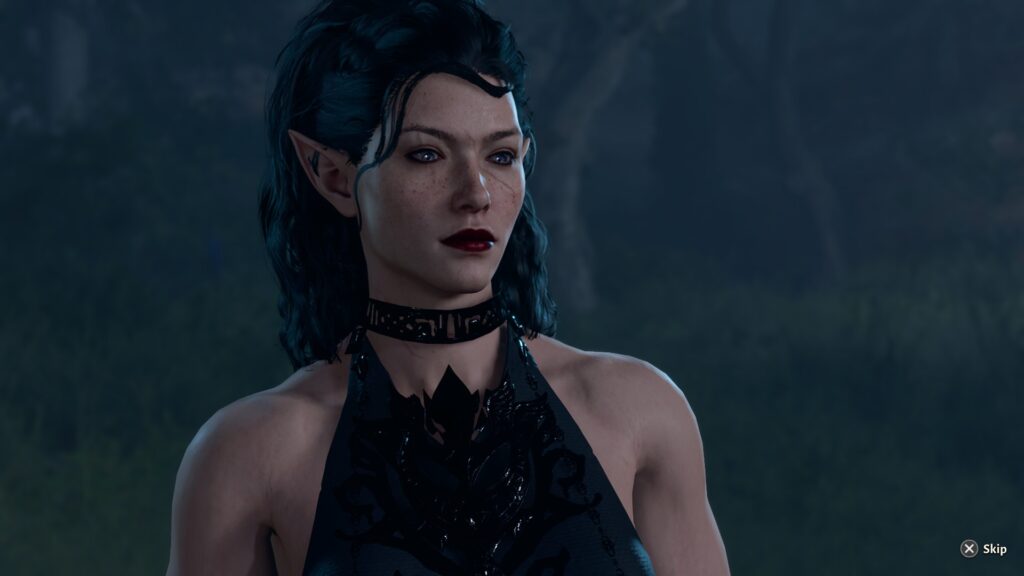
When I started, I wasn’t committed to doing an “evil” playthrough, but Dark Urge did seem more likely to choose the harsher options (walk away from a fatal fight being started, give up on a person that was asking for help), and like the real life slippery slope, once I started, I felt like I just had to keep going. I was already feeling bad about some of the decisions I made and I probably wasn’t going to make them again, so in for a penny, in for a pound, right?
A very, very bloody pound.
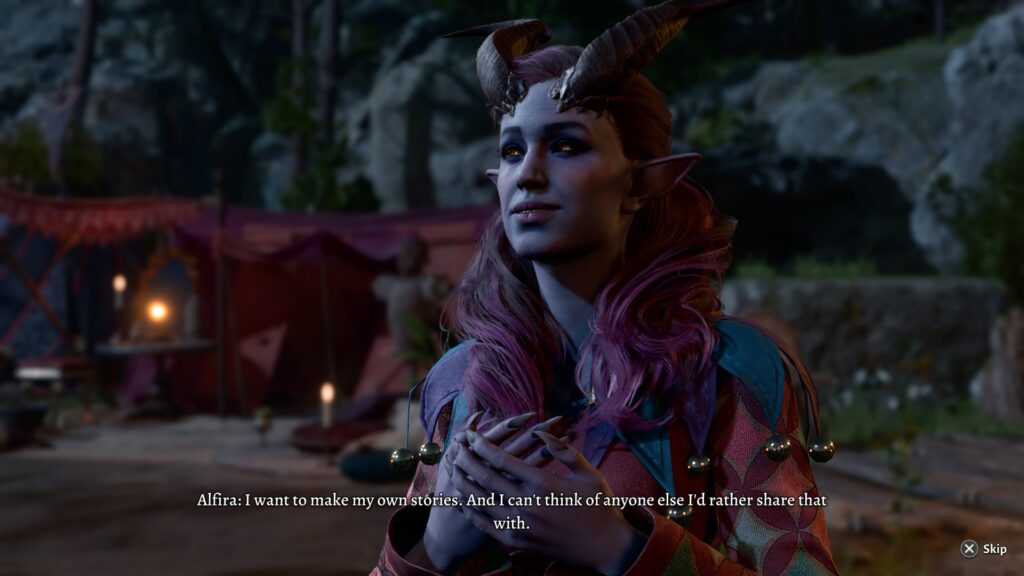
Story
The Dark Urge goes under an “Origin” character, but I had heard that they had a different story, which is partially true. The plot points of the main story are consistent, in terms of the setup, who the Big Bad is, what you need to do, etc. But there are big changes for how this character fits into the story that would constitute spoilers so big even I don’t want to cross them, so suffice it to say that even if you’ve played BG3 a few times, you should definitely try a Dark Urge playthrough.
As with many BG3 playthroughs, there are multiple options for what you can do, and given how mine turned out, I can guarantee that I’ll be doing another playthrough of this with VERY different choices.
Tactician Mode
Since I had found the fighting in 2/14.5 a little too easy, I got rid of some of the mods (infinite elixirs, double XP, infinite weight capacity, etc), and I started this game in Tactician. I’d discussed before how the computer makes battles more difficult, but other things become difficult as well. You can no longer use charm or detect thoughts on people without it tipping them off and them being mad at having been manipulated (fair). Difficulty checks are harder for many things. It cost 80 food instead of 40 every time you want to rest.
The most annoying to me was the money. Everything costs more to buy (about 300% of the price), and when you sell loot, you get significantly less than the listed price (about 40%). Some of this is my hoarding tendencies — I was worried about the harder Tactician mode, so I stocked up on elixirs, special arrows, alchemical ingredients, etc. I also purchased specialty armor that I knew would be the best for certain builds, even if I didn’t have those builds at that time, because I might want to re-spec someone (which did come in handy.) Since I lack the patience and skills to continually pickpocket, I was purchasing everything I needed, and frequently ran out of money. There were times that I had literally 2 gold in my coin purse, and I was selling severed body parts and candles for 1 gold each just to build up some buffer.
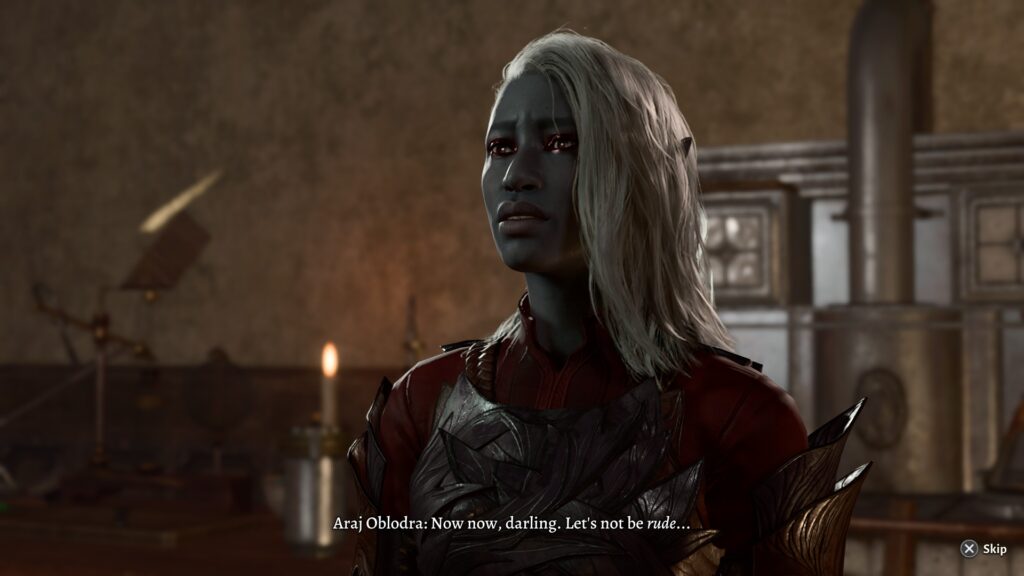
Because I was taking more damage with each fight, it also meant I had to long rest more often, which blew through my supply of food more quickly. However, some of this is because I was used to having so much food in previous games that I just sell everything, but because I was getting so little money for them, it made no sense to sell it but rather to keep it for food. Unfortunately, it took me a while to figure this out.
Characters and Builds
I will never look down on rangers again. Oleandra played a Gloomstalker ranger (multiclassed with rogue and fighter), and by the end of the game, she was getting seven attacks, with the ability to fade into the shadows and disappear before the enemy could counterattack. She took down whole platoons of enemies, gleefully cackling, without even breaking a sweat. I have never been tempted to do a Solo game before (getting rid of all your companions and doing it as just your one main character) but if I change my mind, this build would be a strong contender for the lead role.
Having an evil playthrough means you have far fewer friends and allies on your side, which makes sense thematically. In 1/14, I had ten Companions in camp (the maximum possible), but by the time I finished playthrough 3, I was down to five. As for the 15 non-playable camp followers, I ended up with only 6.
This hurts me a little, to be honest. Maybe I’m someone who gets too emotionally invested in the characters, and therefore it’s hard for me to dissociate — both from the characters themselves, and from what doesn’t make sense for them in canon. Bill had to keep telling me that my own feelings and reactions didn’t have to factor or be impacted by what Oleandra was doing, hence the whole “role playing” aspect, but that’s just something I’m not great at. So when my darlings from previous games were telling me how disappointed they were in me, or threatening to kill me, it made something hurt inside. And unlike Dark Urge, Real Angela can’t just stab everything that hurts me.
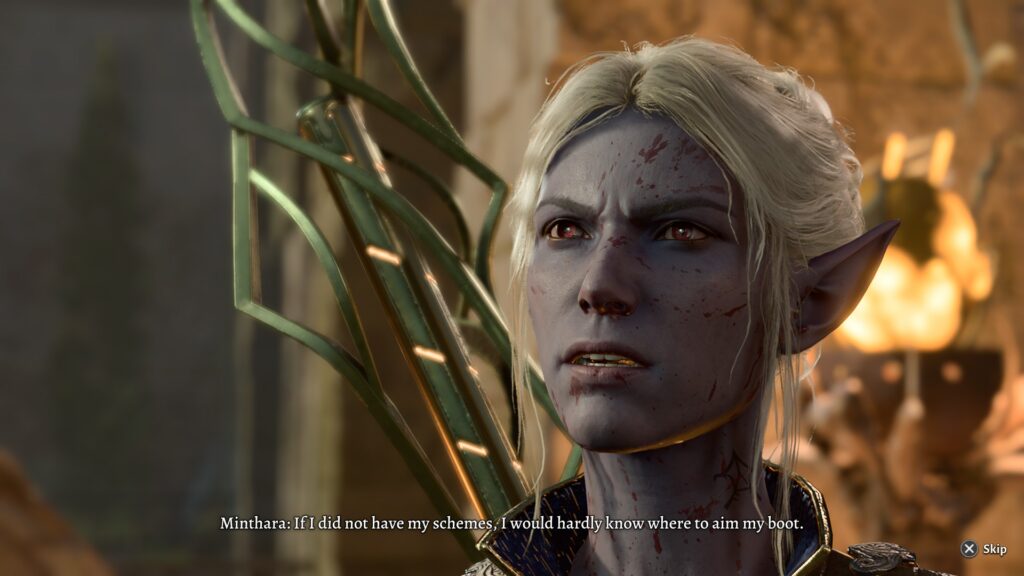
Astarion
I ran out of things to do with him since Oleandra was doing the sneaky sniper thing, so I wanted to try something I had not done before — a glamour Bard. This is what Bill had played in 2/14.5, and while it is not my usual style, it was something new to try out.
I’m still not sure it is my usual style, but I have come to appreciate being able to hypnotize enemies, paralyze them, and set up booby traps. I started thinking of him in that way, so he also had all my grenades and area of effect scrolls. I feel like it would have been more fun to test this out when I was still in Balanced mode, because on Tactician, the traps and control spells didn’t work as often as I had hoped (despite the fact that I was giving him items to increase his Spell Save DC) It also kind of makes sense to me to have Astarion be a bard, since his backstory has a fair amount of seducing/tricking people.
I also figured that since I was doing an evil playthrough, I would do the thing I was very against in my first two playthroughs, and let him Ascend.
And it was like all the potential for that real, growing, interesting Astarion that I had seen in 2/14.5 had entirely disintegrated. Ascended Astarion is an Asshole. He immediately starts lording it over other people, and basically being the worst version of himself. It make sense because instead of confronting his issues, he just became the second version of his abuser. Some of this worked for this version of Astarion because I was playing an evil character, so they fed off each other’s toxic energies, but in any other playthrough, I think I would have hated him. It actually hurt more doing this now, because I have seen what he can grow into in his other path, and this is so much worse.
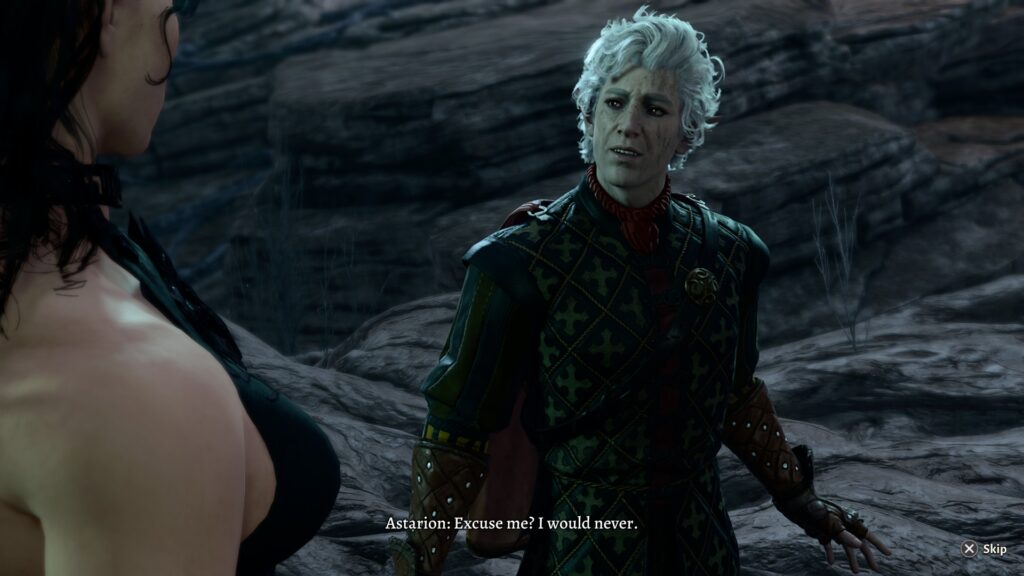
Halsin
My big sweet camp husband is very good at one thing in battle: turning into a giant enraged owlbear and divebombing the enemy. But he can’t talk in wild shape form, and I wanted to see if I could keep him in human form and doing things. Druids can cast control spells like Spike Growth and Insect Plague, but given that I already had Astarion doing his glamour bard thing, Halsin felt fairly vestigial. I tried to make him a straight up fighter, and that wasn’t really working. When I complained to Bill, his exact words were “You’re trying to make a melee druid. There is already such a thing as a melee druid. It’s called WILD SHAPE”
However, no one tells me what I can and can’t do! So I resolved to make him partial barbarian and partial druid. I specced half of his levels to be like my Giant Karlach from playthrough 2/14.5, so that even when he wasn’t wild shaped, he could at least throw things. And when he did wild shape, he would be a doubly enlarged, doubly enraged 100,000-pound owlbear.
Or, hmm, I think there was another phrase used for it? Oh yeah. Fatass Owlbear.
Look, some things are classics for a reason.
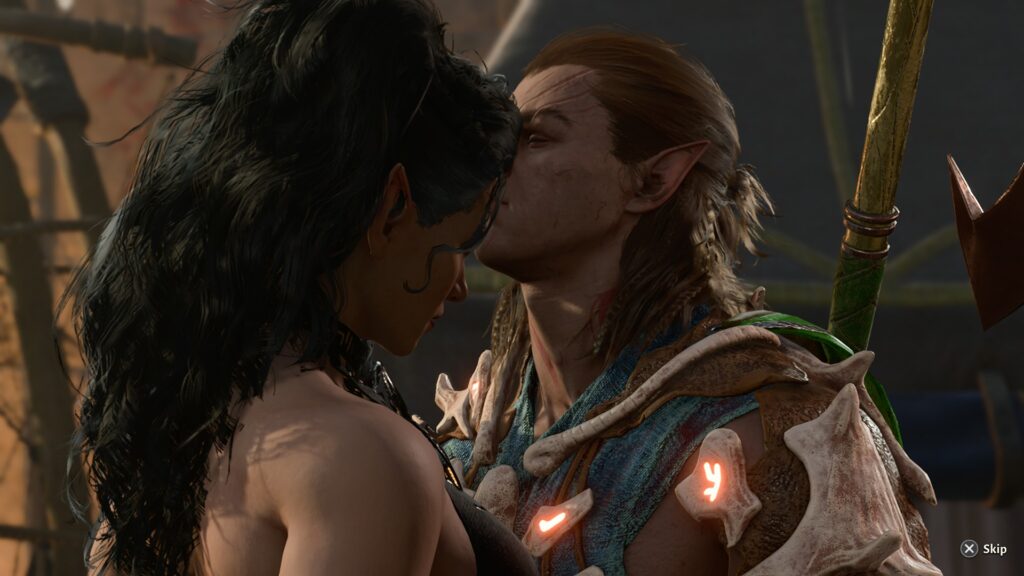
Shadowheart
In an effort to try out new things, I tried romancing Shadowheart this time. I figured that if I was going evil, I’d push her to go down her dark path. In both my previous playthroughs, I had her turn away from Shar, because I just find Sharrans an insufferable cult, and I wanted Shadowheart to think for herself. This time around, I made the choice for Shadowheart to make the story sacrifice and become a “Dark Justiciar”.
And she was absolutely insufferable.
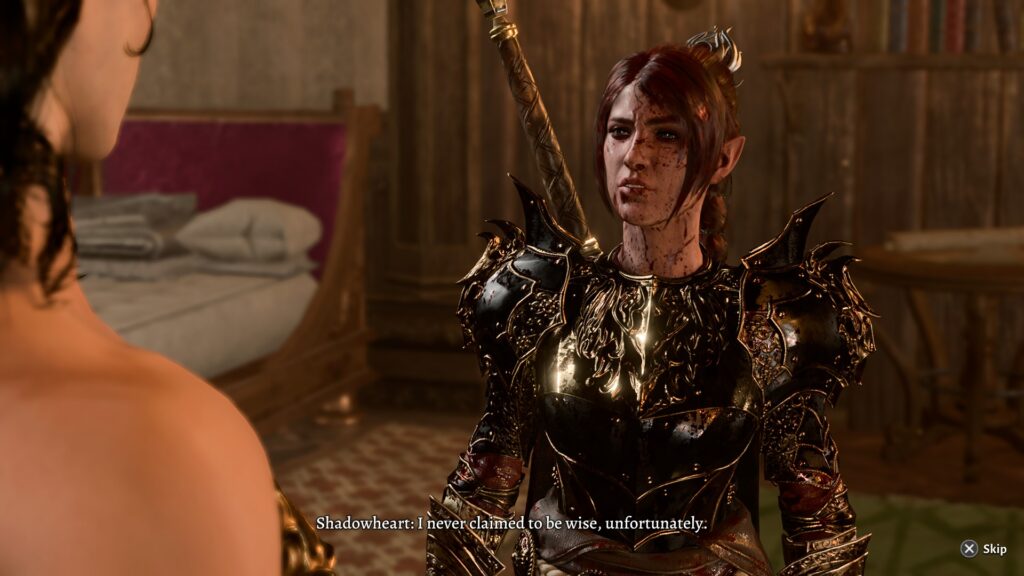
Not only does she go even harder into the “Lady Shar” this and “my Dark Lady” that, but Shar is a jealous goddess and does not want to share affection with romantic relationships. I had to convince Shadowheart to stay in a relationship with me, which is very much against how I want relationships to go. Not only does she become someone who I don’t like, but I have to persuade her not to leave me?
Honestly, I wish I had romanced Minthara instead.
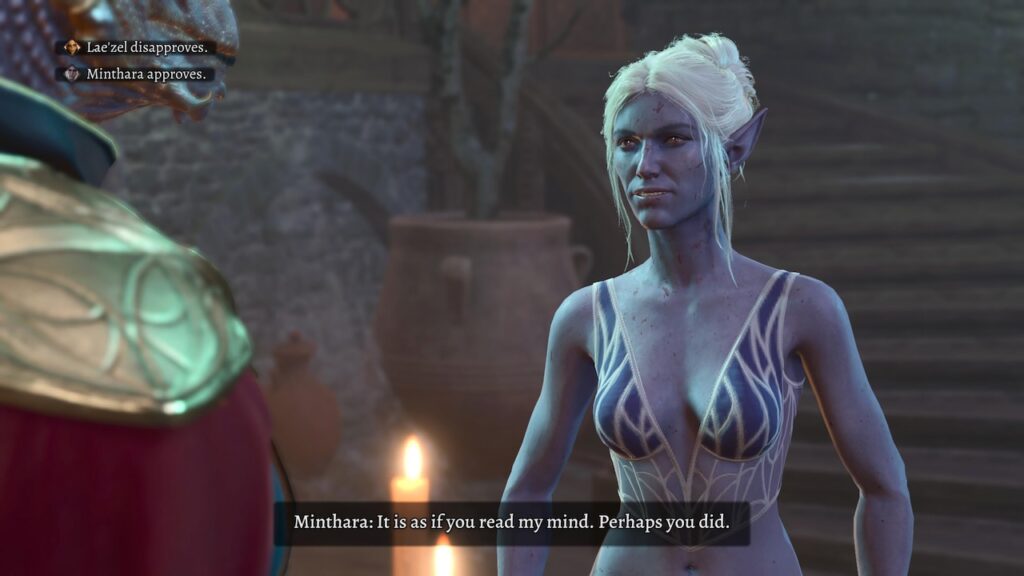
Minthara is remarkably accepting of almost anything your character wants to do, and is one of the few Companions that doesn’t side-eye (or openly disdain) the dark version of Durge, even after the Big Choice. I usually don’t back out of a relationship once my character is locked in, but I found myself so disliking the Shadowheart romance that I started looking at other options. Unfortunately, I misunderstood a question Minthara asked, and gave the absolute worst answer, locking me out of a romance with her. Ah well.
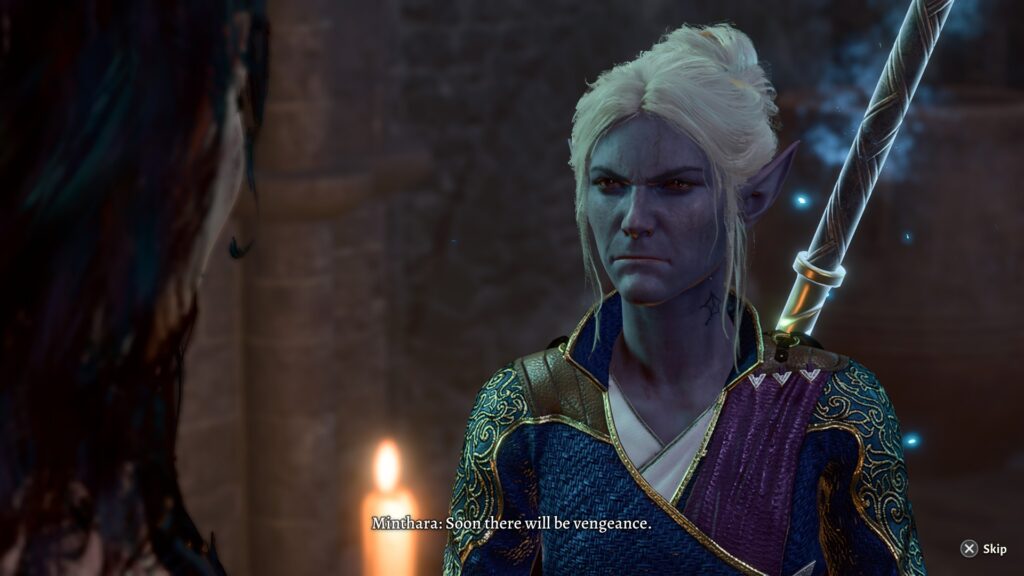
The other reason I didn’t back out of the relationship with Shadowheart is that I wanted to see the end of this plot thread for her, and I don’t think I’m ever romancing her again, or at least, this version of her.
In better news, I finally found a battle version of her I liked: half war-cleric, half paladin. It still gives access to her Spirit Guardians spell so she can run around and do damage just by being near enemies, but it also lets her actually hit people with the paladin’s smite. Paladins, like most melee classes, get an extra attack at level 5, but clerics do not. The benefit of a war cleric is that they have four charges they can expend to make an extra attack. This finally puts Shadowheart/other clerics on the level of three attacks a turn, which is what you would get in a higher level fighter, so she finally became someone I liked having in the smash-party.
One of the benefits of Dark Justiciar Shadowheart (or we can just call her DJ Shart, in a puerile effort to make fun of an awful person) is that her gifted gear is well set up for a darkness strategy. However, I haven’t figured out how to synergize well with that yet, so maybe in another playthrough. But probably not with DJ Shart, since I don’t want to do this with her again.
One of the other annoying things is that the reaction to her main plotline doesn’t seem to change much. When she finally returns to her people, having made the ultimate sacrifice that they all aspire to, they react much the same way as in the other playthroughs when she turned on them. There was a lackluster speech, and then a comparatively mediocre fight.
As the game went on, I got more and more upset at DJ Shart. We could say that she has been brainwashed and doesn’t know better, but even after Shar herself reveals to her the truth, Shart doubles down on it. At that point, you’re on your own, boo boo.
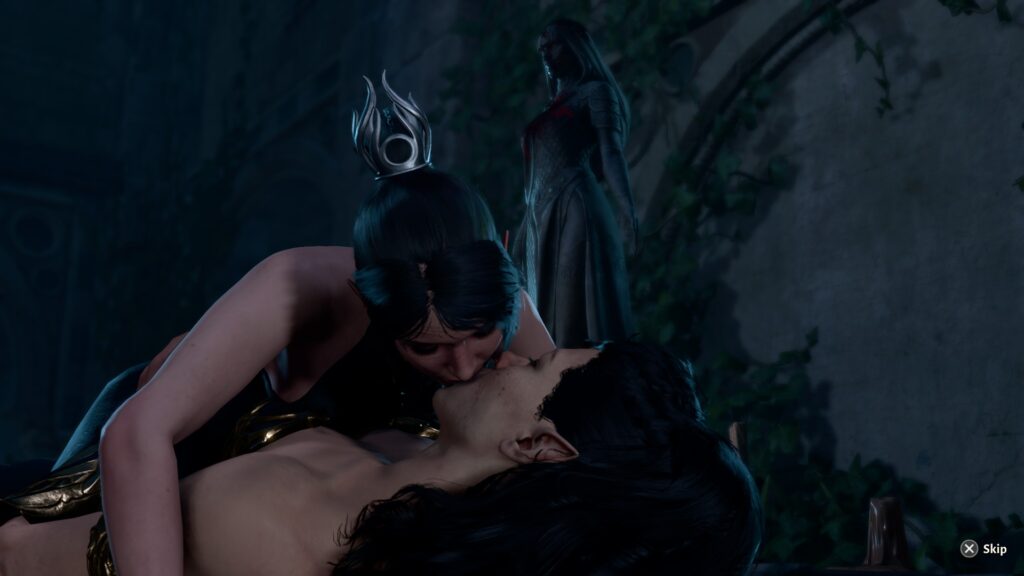
She also is very judgmental on the Dark Urge choices, which is incredibly hypocritical. Excuse you, you do That Thing during the act 3 romance scene, and you dare to judge ME? How dare you?
So it seems that while playthrough 2/14.5 softened me on Astarion, playthrough 3 soured me on Shadowheart.
Ending
There are multiple endings to the Dark Urge’s game, and they’re basically all bad. It also forced me to break a promise in the game that I had personally told myself I would never break. Given who Dark Urge turns out to be, it’s not surprising, but it’s still awful. I reloaded several times trying to see if the other choices would lead to something different, but nope.
I had a bad feeling about this, so I intentionally left Halsin and Karlach at home. No matter what happened, I didn’t want them to see what would happen. I also left all the camp animals.
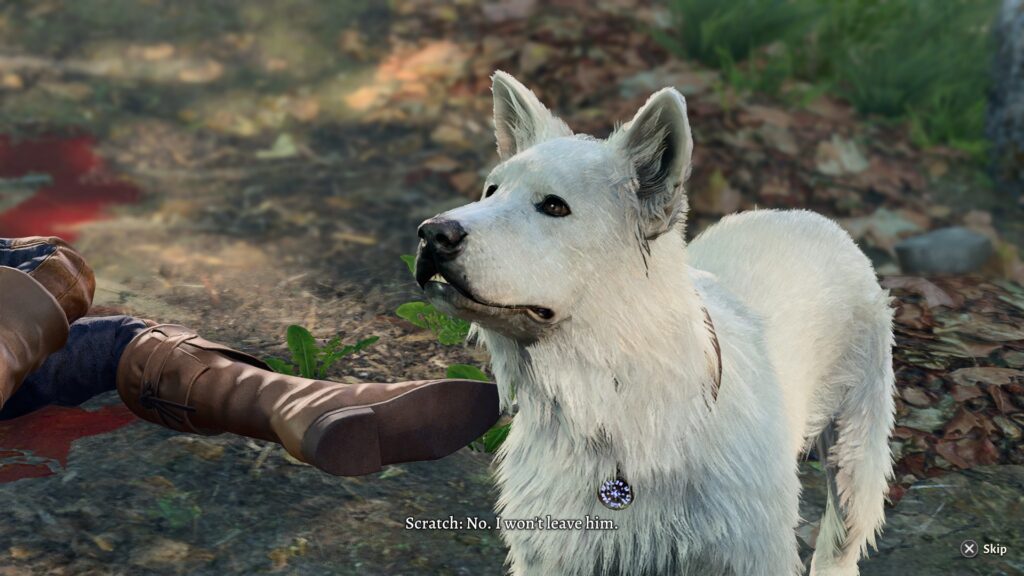
The other annoying thing about it is that due to the nature of the ending, you don’t get the usual post-game scene, which has always been a very enjoyable way of catching up and seeing what happened to your companions. So it also meant that I didn’t get to see the long-term consequences of those decisions I made — although I am sure I can safely assume the answer is “bad”
It didn’t help that I had finished off a bottle of wine by the time I was in my last gaming session, but the endings were bad enough for me that I was crying while I was frantically reloading and trying to get something different.
Takeaway
As it turns out, I chose my original pathways for a reason. I felt happy with the endings I got in 1/14. This time around, I got to make more of the other choices because I was intentionally role-playing Evil, but I hated almost all of them!
Maybe people play Evil games because they want to see what it feels like, or because it’s a cathartic power thing for them. But I have confirmed that it doesn’t work for me. I don’t feel good when I see what happens, and I don’t like seeing characters I like becoming the worst versions of themselves. The evil endings for Dark Urge are also pretty freaking disturbing, to the point that I had nightmares after I finished it.
Moreover, as someone who plays with a strong connection to the characters (for good or for ill), it was difficult for me because many of the characters I had come to love over the past two playthroughs now treated me with horror, disgust, or outright animosity. My main romance was with someone who I felt a combination of all three of those things. So there really wasn’t anything to give me any positive feedback for the game. I was going through it partially to check off the box that I had done so, and partially out of sheer momentum.
So as much as this was a new experience for me, I will be retiring Oleandra and going back to characters that feel more genuine to me.
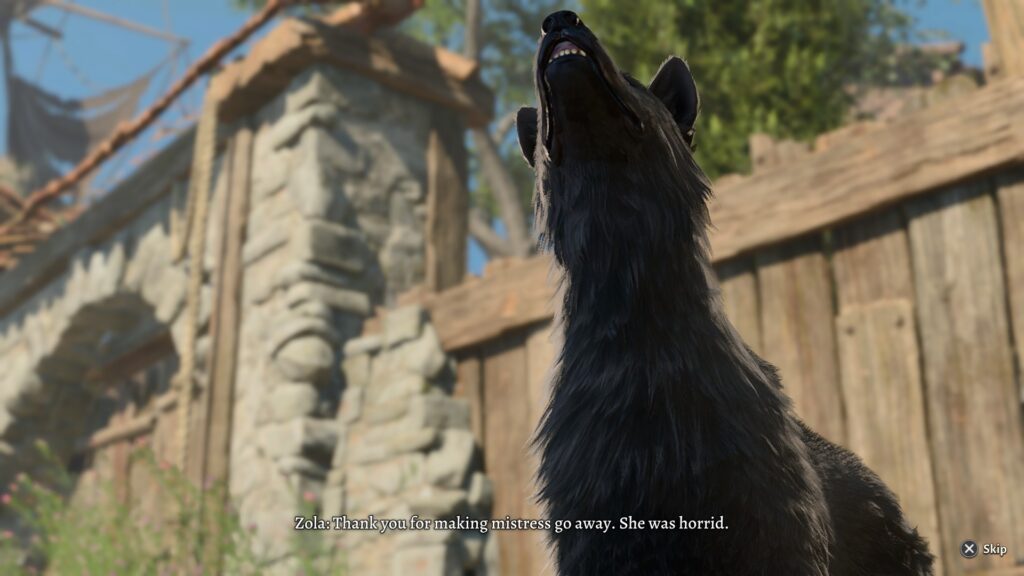
My next playthrough is probably going to be the nicest most goody-goody playthrough ever.
Pingback: Real Angela’s playthrough 6 – Light Urge Persephone – The Argothald Journal